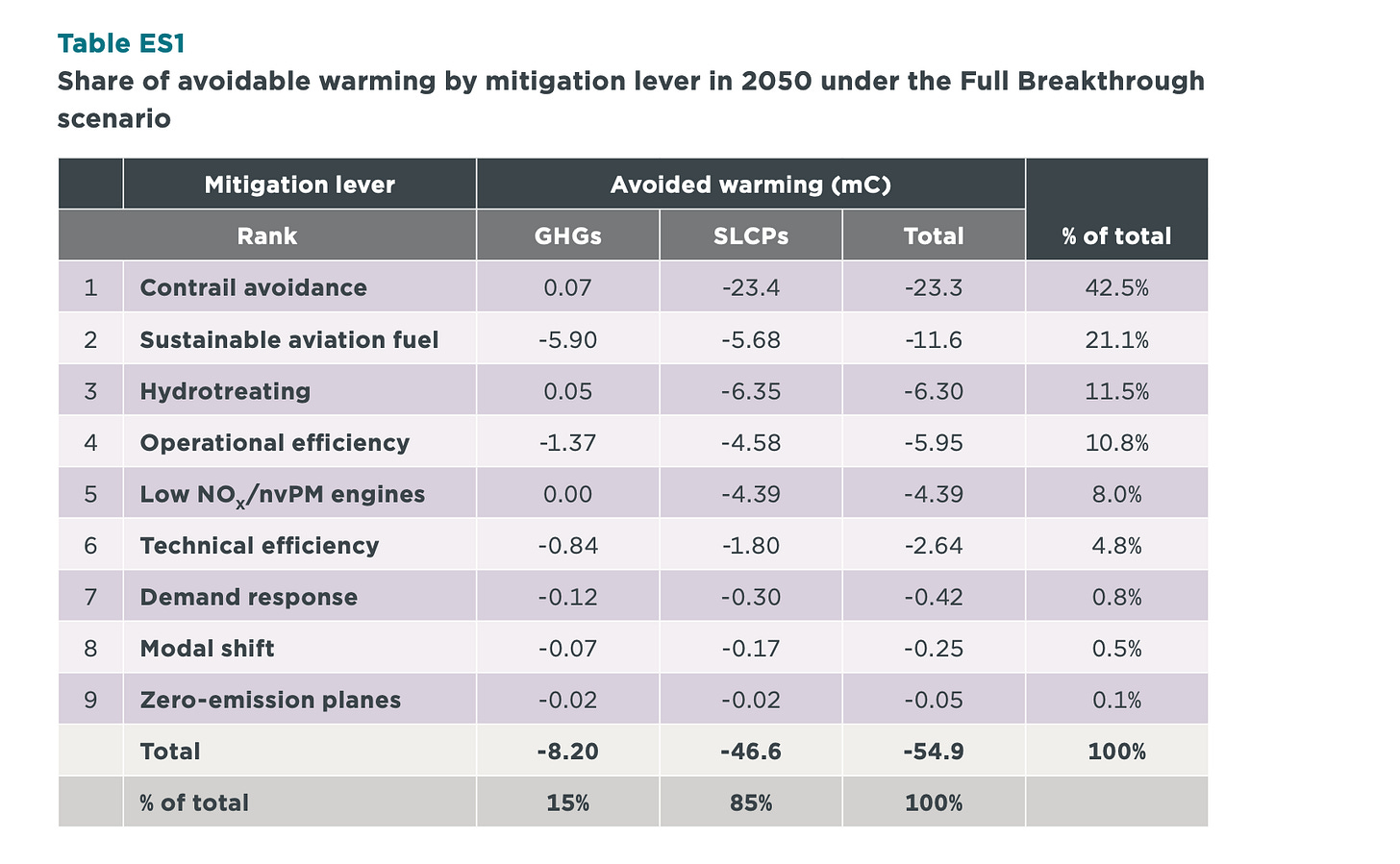New study: Aviation not "hard to abate," could cut 90% of additional warming by 2050
ICCT report reveals contrail avoidance is the single most powerful lever, offering immediate climate benefits at a minimal cost of under €4 per long-haul ticket.
A new study released by the International Council on Clean Transportation (ICCT) challenges the idea that aviation is a “hard-to-abate” sector.
Instead, the ICCT’s report shows how aviation could slash its additional warming through 2050 by 90% by combining traditional greenhouse gas controls with action on short-lived climate pollutants, particularly contrails.
In fact, contrail avoidance emerges as the single most powerful lever, accounting for 40% of potential temperature mitigation by 2050, twice the impact of sustainable aviation fuels.
Perfect timing for policy action
The study’s release coincides with the ICAO’s 42nd Assembly in Montreal, where policymakers are debating whether to supplement the industry’s 2050 net-zero CO₂ goal with additional targets for short-lived climate pollutants.
“The surprising finding is that aviation isn’t a hard-to-abate sector once you factor in contrail avoidance,” explains Dan Rutherford, ICCT’s aviation program director and co-author of the study. This builds on research showing that just 5% of flights cause 80% of contrail warming, making targeted action highly cost-effective.
The ICCT study confirms this using advanced computer modelling that analysed massive amounts of real flight data to predict contrail formation and climate impacts.
Revolutionary methodology, robust results
Previous decarbonisation roadmaps focused primarily on CO₂ emissions, treating contrails and other short-lived climate pollutants as secondary concerns. The ICCT analysis instead fully integrates both greenhouse gases and short-lived climate pollutants into a unified framework.
The study’s “Full Breakthrough” scenario demonstrates that maximum efforts to reduce both categories could prevent aviation from exceeding its current 4% share of global warming, even as traffic increases by about 150% to 2.5 times 2023 levels by 2050.
Under this scenario, additional aviation warming after 2025 would be slashed by more than 90%, from what would otherwise be a doubling of aviation’s climate impact to just a 9% increase above current levels.
Contrail avoidance delivers 43% of this climate benefit, while sustainable aviation fuels contribute 21%. Fuel improvements and more efficient operations make up most of the rest. The study shows these solutions work best together, with contrail avoidance offering immediate benefits while other technologies develop
Real-world validation
The ICCT’s theoretical projections align with ongoing operational trials.
As detailed in our book, Sustainability in the Air, a comprehensive American Airlines, Google Research, and Breakthrough Energy study analysed 85,000 flights and achieved a 73% reduction in contrail energy forcing with just a 0.11% fuel penalty.
When examining maximum contrail avoidance, rerouting 11,000 out of 85,000 flights, the fuel penalty remained minimal at 0.11% with only a 0.08% cost increase.
Similarly, a Reading-Sorbonne analysis of nearly half a million transatlantic flights demonstrated that airlines could reduce overall warming by up to 29% using just 1% more fuel over 20 years.
Economics that scale
The ICCT study reinforces contrail avoidance’s cost advantage. At $5-20 per tonne of CO₂ equivalent avoided, it’s far cheaper than sustainable aviation fuels, which the study prices at over $300 per tonne CO₂e.
Given the persistent scepticism of the real impact of contrail mitigation versus additional fuel burn, this could be the crucial evidence that finally persuades airlines to take contrail action.
For passengers, separate T&E research suggests this translates to less than €4 per long-haul ticket, barely the price of an airport coffee. This economic advantage becomes even more pronounced when compared to SAF’s higher costs and slower scale-up timeline, which limit near-term climate benefits. Contrail avoidance, by contrast, offers immediate impact at a fraction of the cost.
As a result, the study notes that contrail avoidance is “potentially the most effective means of reducing aviation’s contribution to climate change” precisely because it can deliver substantial benefits without requiring complete fleet transformation or fuel system overhauls.
Implementation roadmap
The ICCT analysis provides a realistic implementation timeline acknowledging both technical possibilities and practical constraints.
High-income countries would begin scaling contrail avoidance in 2032, reaching 95% effectiveness by 2042. The seven-year lead time allows for scaling up trials and proving climate benefits across entire airspaces.
The researchers emphasise that while contrail avoidance alone cannot stabilise aviation’s climate contribution, it provides crucial near-term climate protection while longer-term greenhouse gas controls take effect.
As aviation leaders meet in Montreal this week, the ICCT study shows they have two paths: stick with current CO₂-only targets and watch aviation’s climate impact more than double, or add contrail controls and achieve climate-neutral growth.
For more insights on contrail science and mitigation strategies, see the contrails chapter in our book, Sustainability in the Air.
The ICCT report “Aviation Vision 2050: The Potential for Climate-Neutral Growth” was authored by Xinyi Sola Zheng, Jayant Mukhopadhaya Ph.D., Jonathan Benoit, Supraja N. Kumar, Dan Rutherford Ph.D., Deniz Rhode, and Daniel Sitompul.





